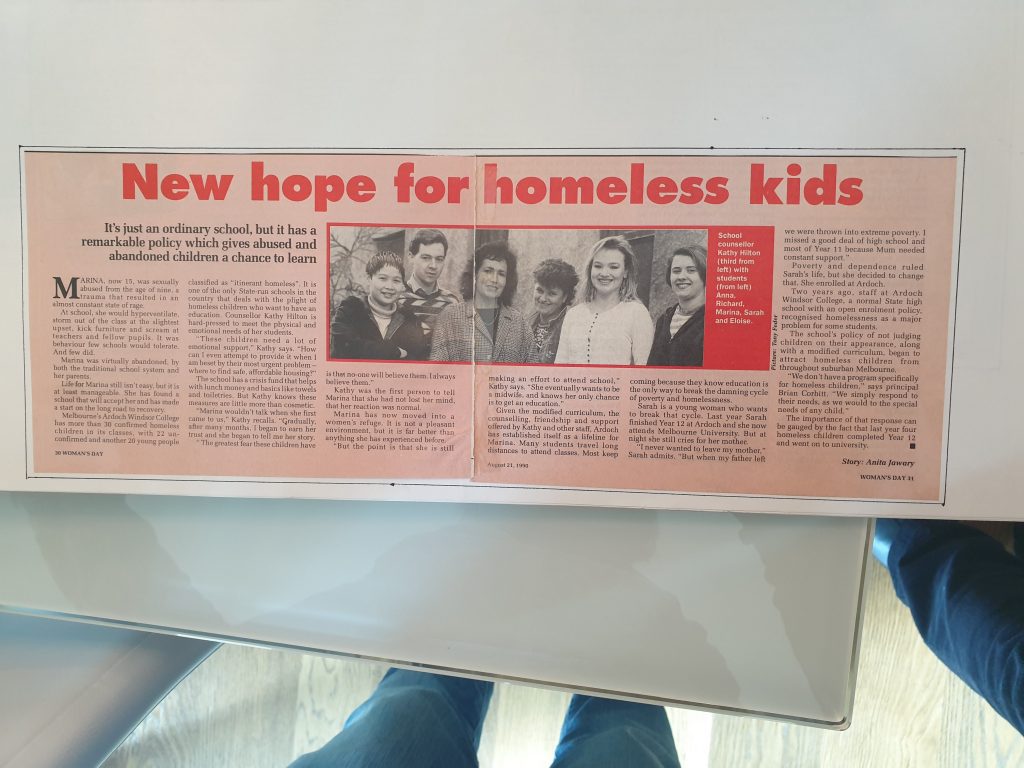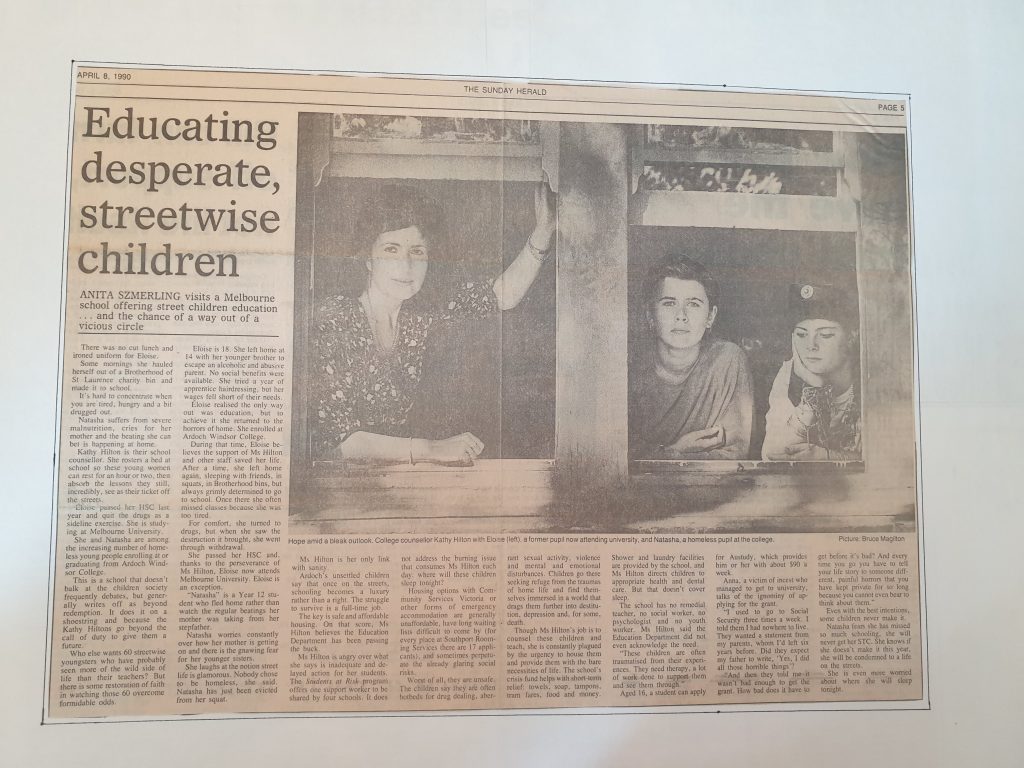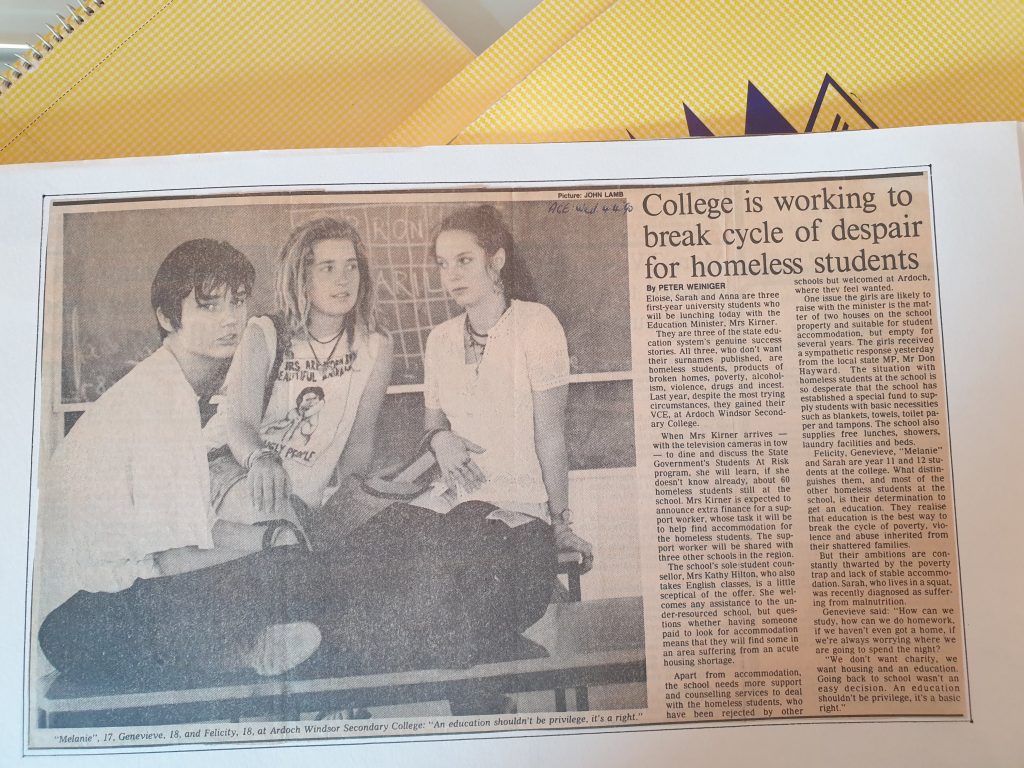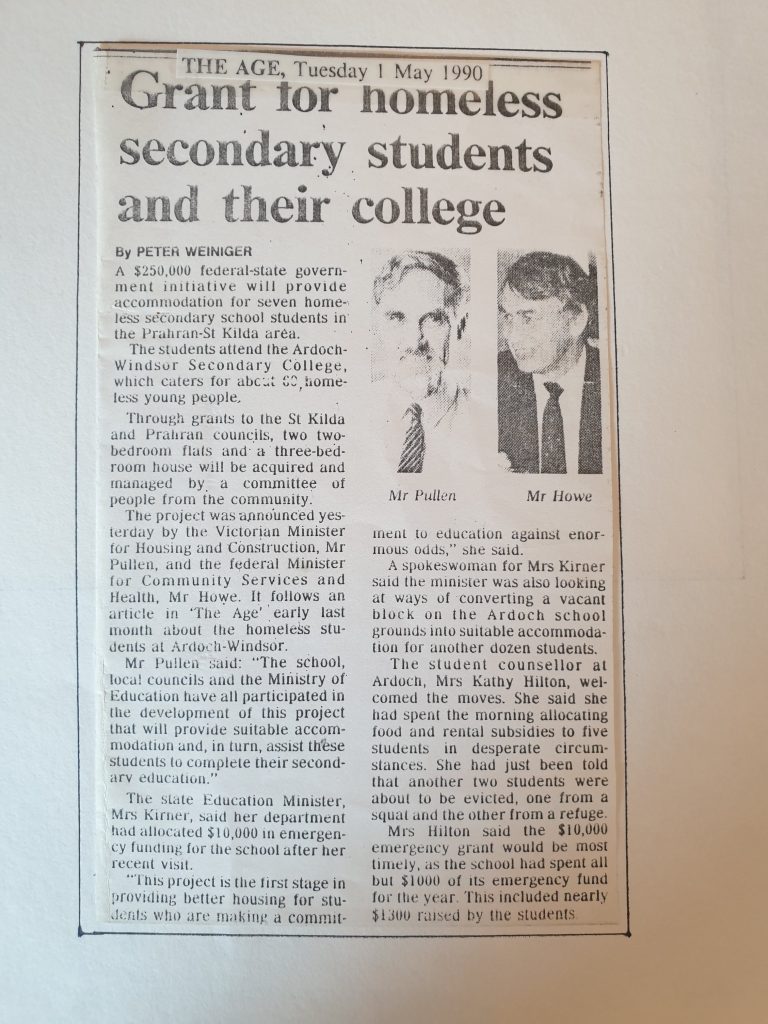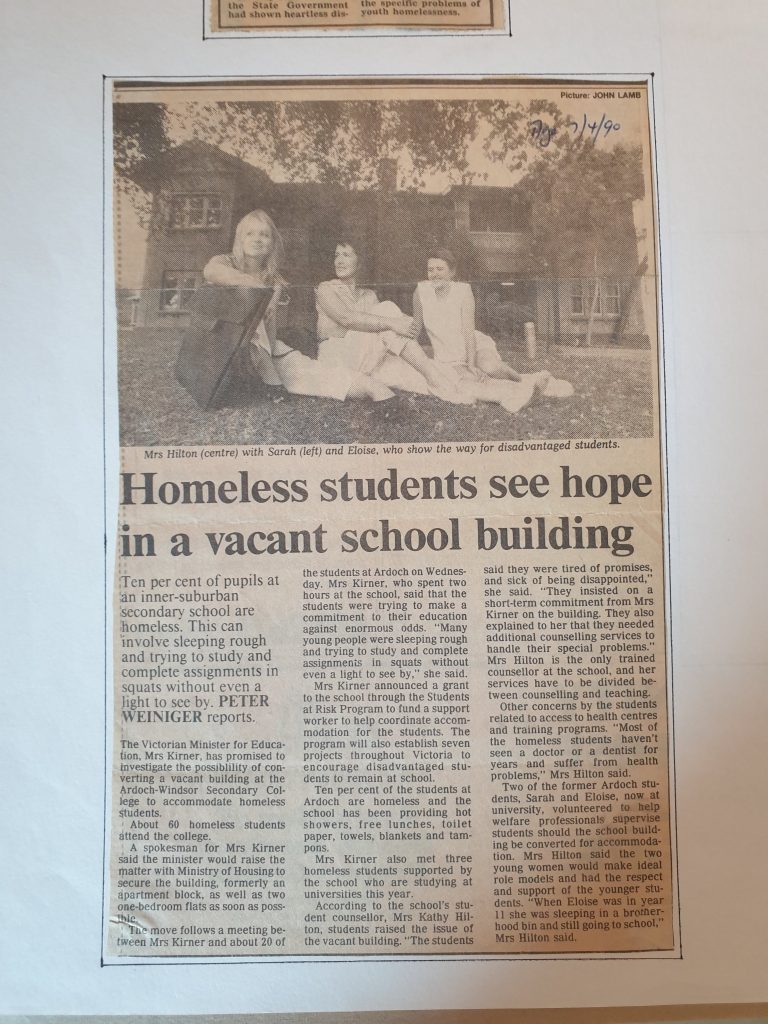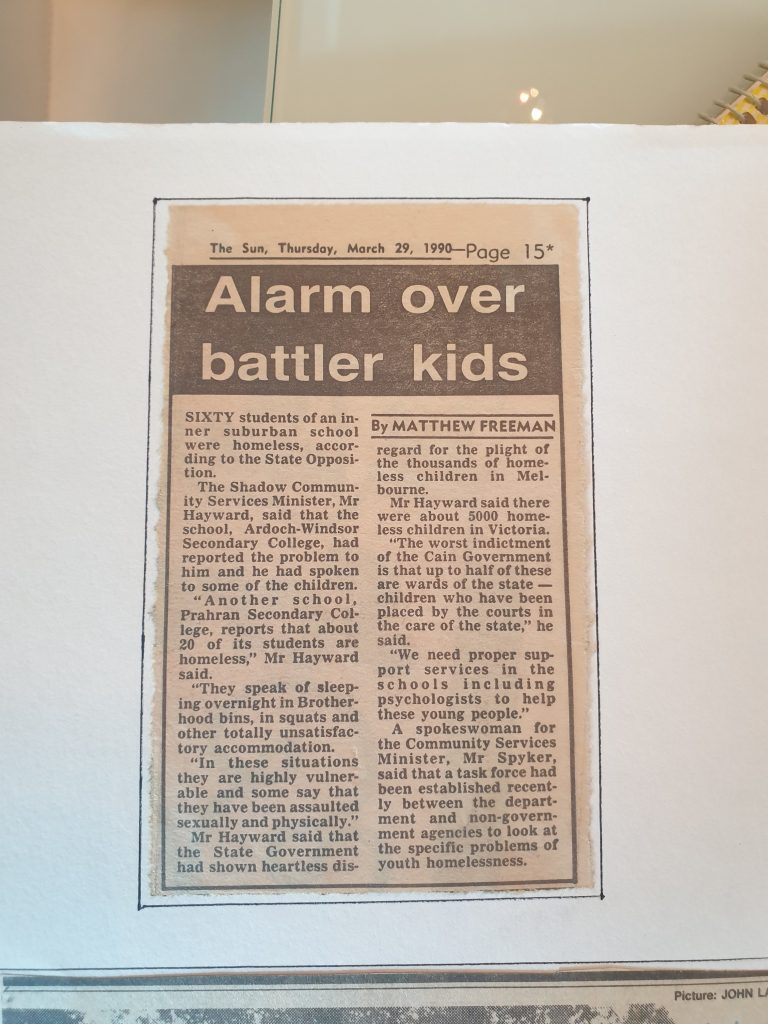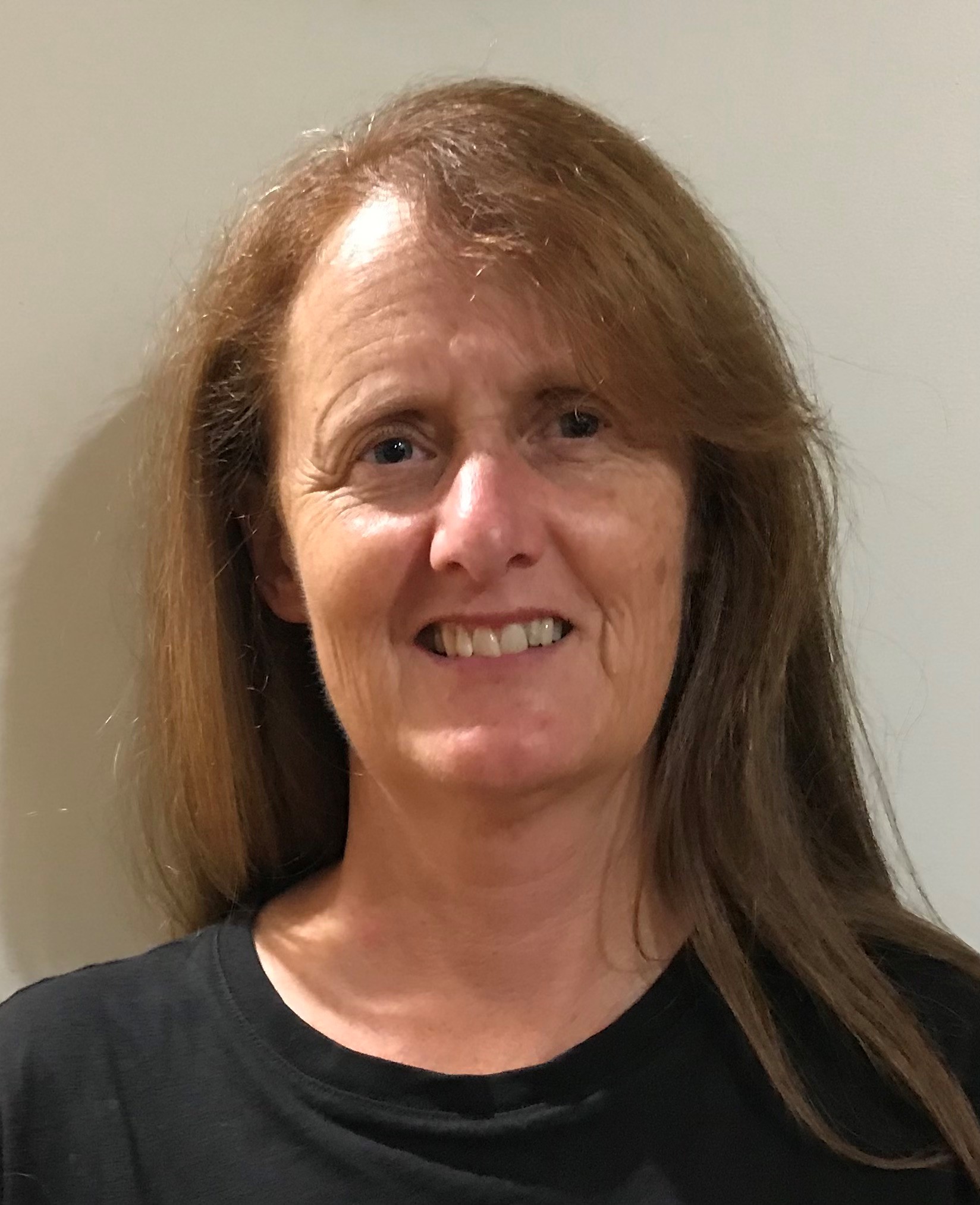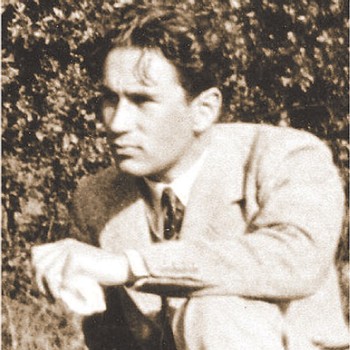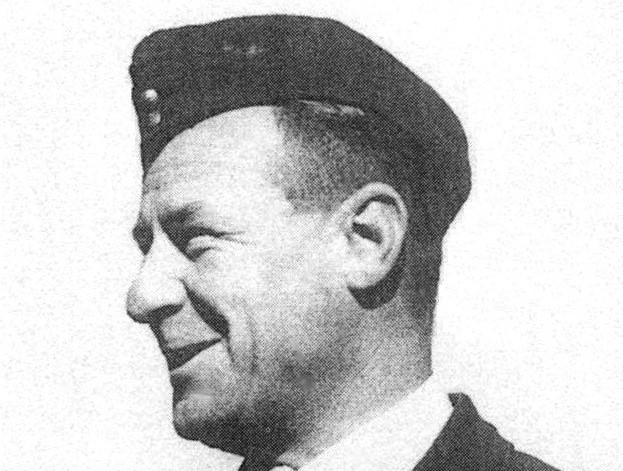Kathy Hilton OAM
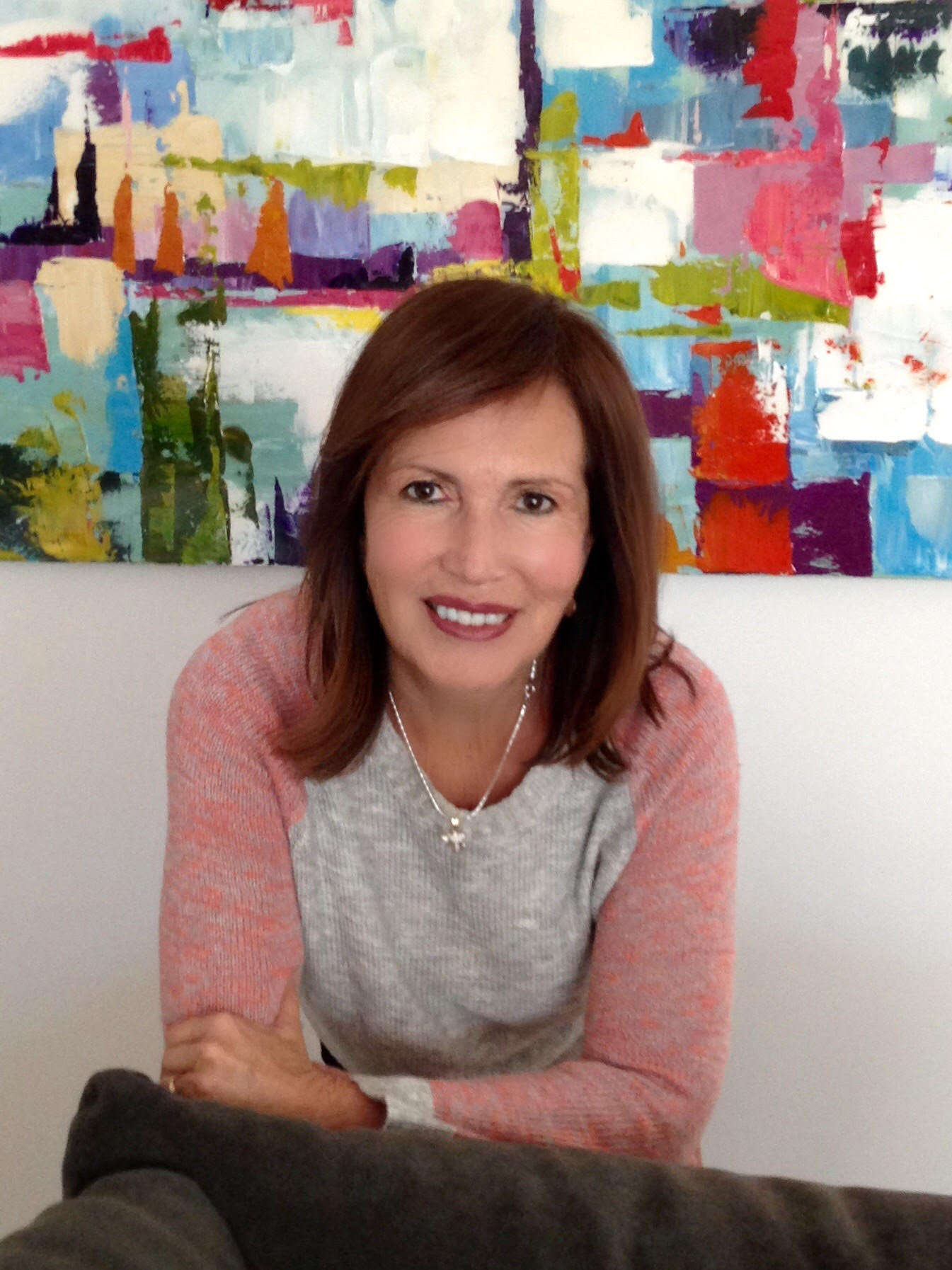
Kathy Hilton, teacher and counsellor.
You can’t fix the world, but you can make a difference. The goodness ripples out.
Kathy is from a family of Hungarian Holocaust survivors. Her family truly valued living in Australia and considered it “the lucky country” where there was freedom and opportunity to make a better life. Part of that better life was helping others and being involved in giving back.
Even as a youngster, Kathy felt strong empathy for others, and as an adult looking back at her childhood realized that she had always had a strong sense of social justice.
Kathy was a teacher, and school counsellor at Ardoch High School and Ardoch Windsor Secondary College and subsequently became the founder of the Ardoch Youth Foundation, a not-for-profit community organization that supports young people who are at risk to access education.
The Ardoch site was purchased by the Department of Education in 1977. Kathy remembers her first visit to Ardoch in 1986 – a fact-finding visit in response to a job advertisement that unexpectedly turned into a job interview that very same day.
The front buildings were used as the district School Support Centre and the rest of the buildings had become a state high school – Ardoch High School – servicing the local community.
Each building was run as a sub-school, with classes held in what had been lounge and dining rooms; the kitchens and bathrooms were also utilized, unrenovated, as they had been in the apartments.
Kathy stopped to smell the flowers and admired the Village Green surrounded by rose bushes. There was a small horticulture area where roses were nurtured, and plants readied for planting.
The entire site was unique for a school. There was such a beauty about it you could not help feeling good just by being there. The peaceful environment had a positive effect on its broad mix of students. But there was more; the school had an all-embracing philosophy and practice that matched very well with the environment.
This was a school that thrived on doing things differently. At Kathy’s job interview, there was a student on the panel; at the end of each year, students were surveyed about what subjects they were interested in doing; if students needed time out they could sit in the garden or help out in the greenhouse; year 8-10 classes were vertically run and students worked at their individual skill level. The students and teachers were happy.
Kathy began working at Ardoch High School in September 1986 as a teacher and the school’s first ever student counsellor, never expecting what was to unfold in the coming years.
In 1987, a 16-year-old year 11 student, Eloise, a victim of a traumatic family breakdown, asked Kathy for help to enable her to stay at school. Her problem was homelessness. She was coming to school from the shelter of a Brotherhood of St Lawrence clothing bin.
When Kathy found out about her homelessness, she phoned the Education Department for help but was told it was not their responsibility, and neither was it hers.
Several other ministries said the same thing!
Kathy felt a moral responsibility to do what she could to help.
Eloise did realise that education was her ticket to chances and choices in life. An incredible learning journey began. Eloise needed clothes, medical and dental attention as well as a safe home to go to. She couldn’t afford books and there were gaps in her education. But Kathy worked on what she could do for Eloise and Eloise thrived.
It was a steep learning curve and the word got around that support was available at this unique school.
The following year, 12 students identified themselves to Kathy as being homeless; the following year there were 36, the next 78. By 1992, out of a total school population of 400, over 100 students experiencing homelessness and many other students who were living at home and experiencing disadvantage were being helped by Ardoch support programs.
One of the first things Kathy could do was let the teachers know when kids had particular issues, so the staff could exercise sensitivity and respond appropriately and caringly. Kathy arranged accommodation and worked to supply basic necessities such as food and clothes, toothbrushes and toilet paper. Volunteer health professionals were enlisted to respond to a variety of health needs. Volunteers also worked in classrooms as tutors and as mentors. Local services were linked into the school to provide counselling and parent support programs.
Eventually, with their permission, a group of these students visited other schools with Kathy to raise awareness about homelessness. At one school, Mt Scopus College, the students were moved by the stories they heard. Wanting to help, the Mt Scopus students raised money for a bond on Ardoch’s first flat and subsidised the rent. Wesley College Parents’ Association funded additional housing for the Ardoch students. Connections were made with Melbourne businesses to assist with fundraising. The Body Shop subsidised rent for other properties. Hanover Welfare Services became involved. Esprit sponsored places and donated clothing. The Body Shop donated toiletries and provided volunteers for the first breakfast club, which became a model for other schools.
The Ardoch school support programs became a model of care that had an impact on schools and communities nationwide.
But behind the scenes, the state government wanted to sell the Ardoch site as it was so valuable. In 1988, they merged Ardoch High School with Windsor Technical School across the road, creating the Ardoch-Windsor Secondary College.
For a couple of years, programs were run from both sites, but despite the school’s success and Kathy’s empathy, care and love for these students, and the students’ love for their school, Ardoch was closed in 1992.
The Urban Land Authority and developers converted the site to its original residential use.
Kathy wouldn’t let all their hard work go to waste. “We knew our programs worked, we had proof our programs worked. The kids were at school. They graduated. They didn’t all get Year 12 but they’d graduated another year and they weren’t thinking of themselves as dumb and stupid anymore. They could contribute to the community, they could get jobs and they could become loving parents.
“We knew our Ardoch Strategies and Programs – the Ardoch Model – could be reproduced at any site”.
As a result, Kathy went on to establish the Ardoch Youth Foundation in 1992. There are now thousands of people touched by Ardoch.
The Ardoch Youth Foundation was seeded on the beautiful Ardoch Village site which provided the ideal environment for supporting and educating homeless and underprivileged young people who, frequently, had experienced school failure and had little beauty in their lives.
The unique peaceful atmosphere, and historically steeped environment with its beautiful rose gardens and greenery, made coming to the mansion-style school buildings a pleasure for the students. This, combined with the responsive, supportive educationally innovative programs developed, had life-changing effects on hundreds of students attending the school and thousands of others who benefitted by the development of a model of care that had an impact on schools and communities nationwide.
On 16 June 2013, a tree-planting ceremony was held on the lawns of the Ardoch Village Green to commemorate the 25th anniversary of Ardoch Youth Foundation. A memorial stone was laid by Kathy and Lady Anna Cowen. It pays tribute to the important work that was seeded on this unique, beautiful and historic site.
The memory of the Ardoch Village is etched into the memories of all who were lucky enough to benefit from it directly.

